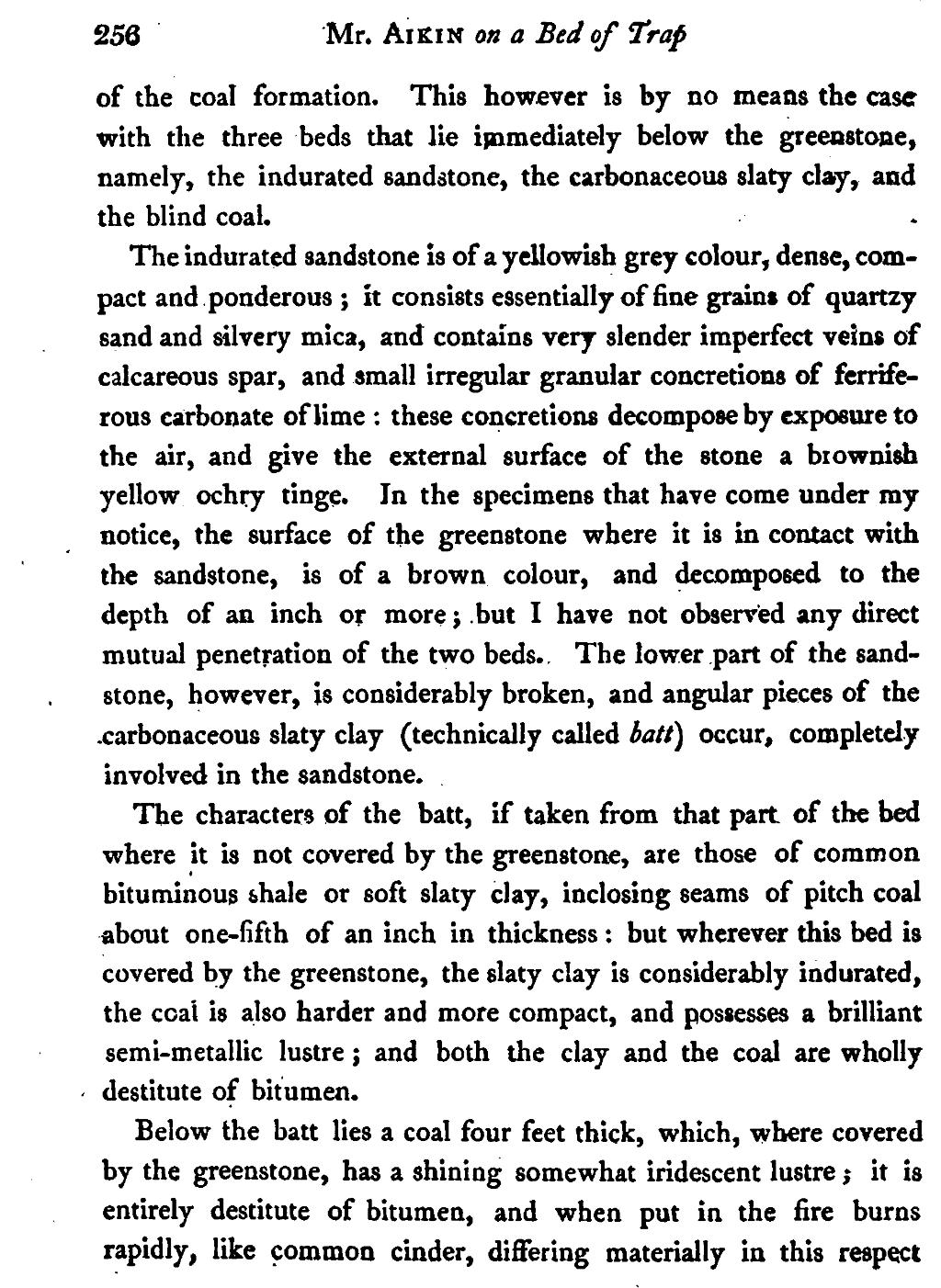of the coal formation. This however is by no means the case with the three beds that lie immediately below the greenstone, namely, the indurated sandstone, the carbonaceous slaty clay, and the blind coal.
The indurated sandstone is of a yellowish grey colour, dense, compact and ponderous; it consists essentially of fine grains of quartzy sand and silvery mica, and contains very slender imperfect veins of calcareous spar, and small irregular granular concretions of ferriferous carbonate of lime: these concretions decompose by exposure to the air, and give the external surface of the stone a brownish yellow ochry tinge. In the specimens that have come under my notice, the surface of the greenstone where it is in contact with the sandstone, is of a brown colour, and decomposed to the depth of an inch or more; but I have not observed any direct mutual penetration of the two beds. The lower part of the sandstone, however, is considerably broken, and angular pieces of the carbonaceous slaty clay (technically called batt) occur, completely involved in the sandstone.
The characters of the batt, if taken from that part of the bed where it is not covered by the greenstone, are those of common bituminous shale or soft slaty clay, inclosing seams of pitch coal about one-fifth of an inch in thickness: but wherever this bed is covered by the greenstone, the slaty clay is considerably indurated, the coal is also harder and more compact, and possesses a brilliant semi-metallic lustre; and both the clay and the coal are wholly destitute of bitumen.
Below the batt lies a coal four feet thick, which, where covered by the greenstone, has a shining somewhat iridescent lustre; it is entirely destitute of bitumen, and when put in the fire burns rapidly, like common cinder, differing materially in this respect
